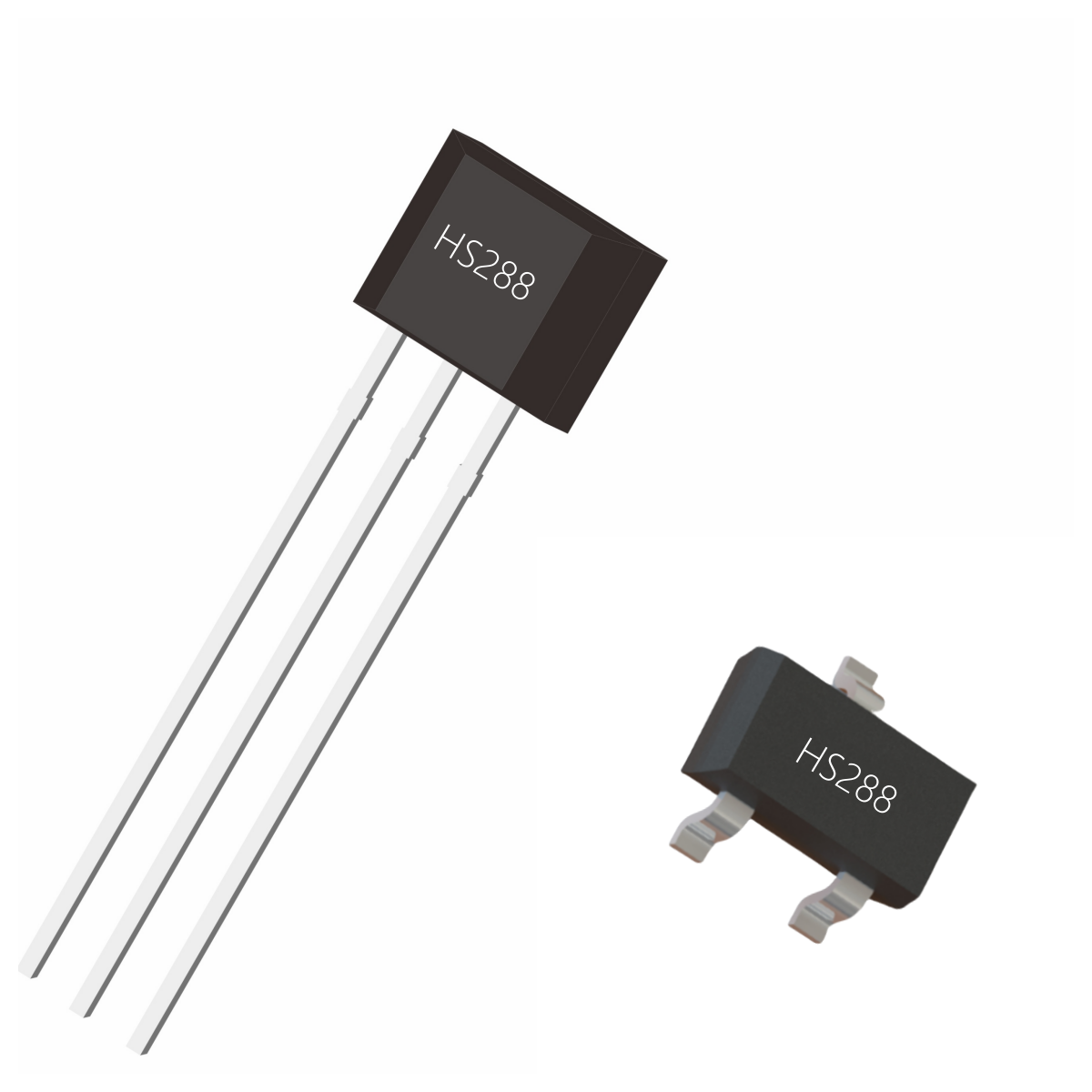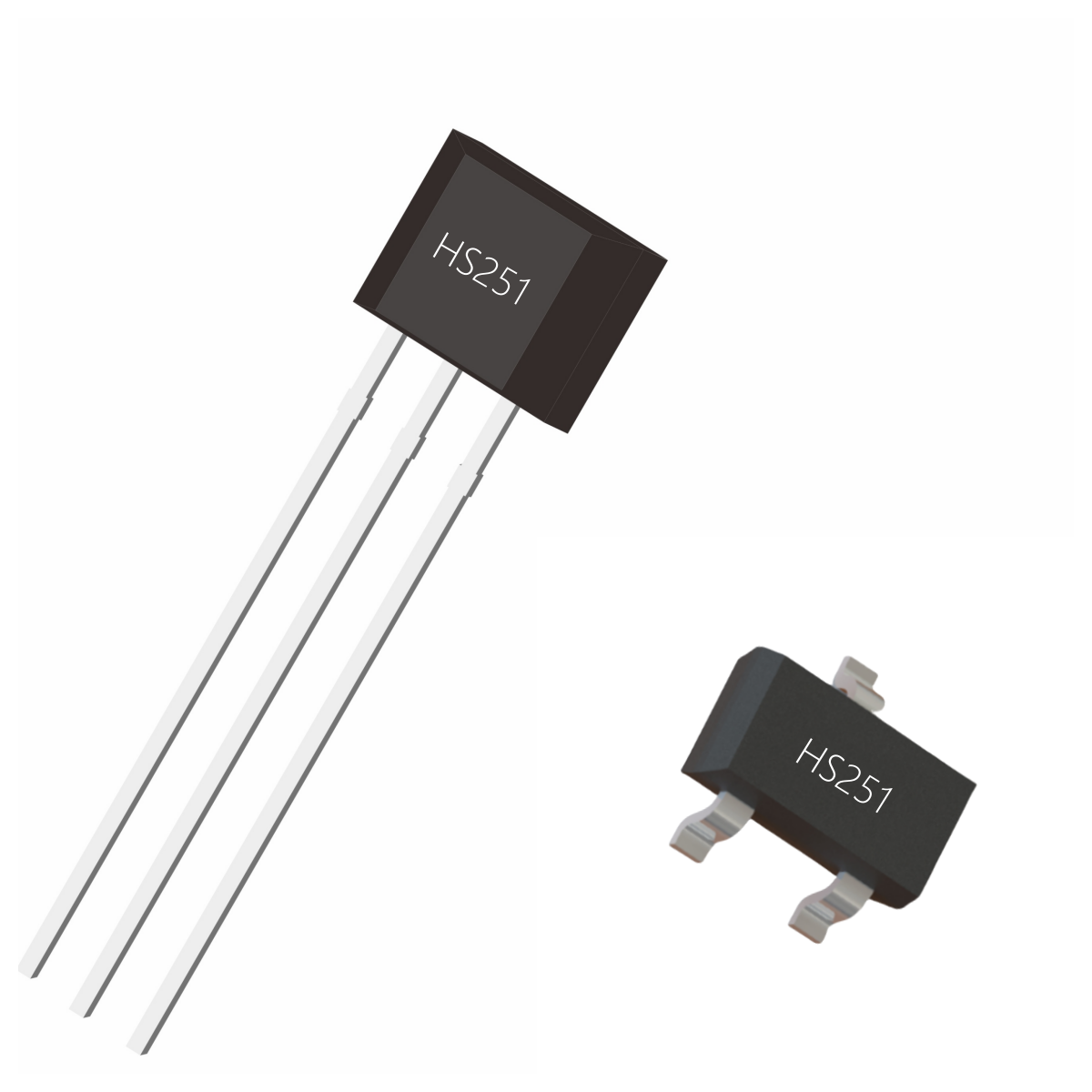The HS288 is a bipolar latching Hall effect sensor based on mixed-signal CMOS technology. The device integrates a voltage regulator, a Hall sensor with a dynamic bias compensation system, a Schmitt trigger and an open-drain output driver, all in one package.
This IC uses advanced chopper stabilization technology to provide accurate and stable magnetic switch points. In addition to the applications listed in the "Applications" below, this sensor has many other applications. Its design, parameters and performance are optimized for use in 5V-12V DC brushless motor phase conversion applications.
Because of its wide operating voltage and wide temperature range, the HS288 is very suitable for use in automotive, industrial and consumer industries.
This IC is available in a SOT package for surface mount and a single-row TO-92S flat package that can be directly inserted. Both 3-pin packages are RoHS compliant.
The HS288 exhibits latching magnetic switching characteristics. Therefore, it requires both south and north poles to operate properly.
When the magnetic field strength perpendicular to the Hall sensor exceeds the operate point threshold BOP, the output is low (output is on). After switching on, the output voltage is VDson.
Note that the device is latched, i.e. the magnetic induction strength with the south pole facing the marked side of the device is large enough to turn the device on, and the device remains on even if the south pole is removed (B→0). This latching characteristic defines the device as having magnetic memory.
When the magnetic induction strength decreases below the release point BRP, the output is cut off (output is high). The difference between the operate point and the release point of the magnet is the hysteresis of the device BHYS.
The built-in hysteresis prevents output oscillations near the switching point, allowing the output to switch cleanly in the presence of external mechanical vibrations and electrical noise.
The device with symmetrical operate and release switching points (BOP=|BRP|) works like a latch. This means that the same magnetic field strength and different directions can make the output high or low.
Powering on the device in the hysteresis region (below BOP, above BRP) will result in an indeterminate output state. The correct state is acquired after the first time it is well above BOP or well below BRP.
The SOT-23 packaged device is the opposite of the UA package. The SOT-23 output transistor is latched when the magnetic field strength of the north pole applied to the surface of the marking face is strong enough.
The HS288 is a high magnetic sensitivity Hall effect sensor based on mixed signal CMOS process. This versatile latch is suitable for most application requirements.
The chopper stabilized amplifier uses switched capacitor technology to suppress the bias voltage of the Hall sensor and amplifier. The CMOS process makes this advanced technology possible and has a smaller chip size and lower power consumption than the Bipolar process.
The small chip size is also an important factor in reducing the effects of physical stress. This combination can obtain more stable magnetic characteristics and enable faster and more accurate designs.
Its wide operating voltage range: 3.5V ~ 24V, low power consumption and large operating temperature selection range: "L", "E" grades make this device suitable for automotive, industrial and consumer applications.
Product features
2. High magnetic sensitivity – multi-function
3. CMOS process
4. Stable chopper amplifier
5. Superior temperature stability
6. Very low switch point drift
7. Insensitive to physical stress
8. Low current consumption
9. Output drive with pull-up resistor
Main applications
1. Automotive, consumer, industrial solid-state switches
2. DC brushless motor commutation speed detection
3. Linear position detection
4. Angular position detection
5. Proximity detection
Product parameters

 English
English Chinese
Chinese Dongguan Hallsen Technology Co., Ltd
Dongguan Hallsen Technology Co., Ltd




